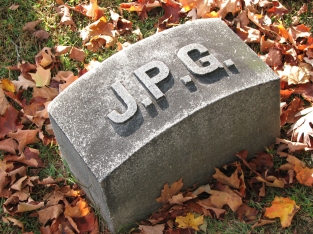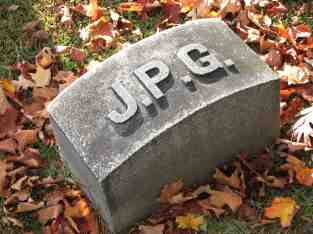Effects of JPEG compression
JPEG compression artifacts blend well into photographs with detailed non-uniform textures, allowing higher compression ratios. Notice how a higher compression ratio first affects the high-frequency textures in the upper-left corner of the image, and how the contrasting lines become more fuzzy. The very high compression ratio severely affects the quality of the image, although the overall colors and image form are still recognizable. However, the precision of colors suffer less (for a human eye) than the precision of contours (based on luminance). This justifies the fact that images should be first transformed in a color model separating the luminance from the chromatic information, before subsampling the chromatic planes (which may also use lower quality quantization) in order to preserve the precision of the luminance plane with more information bits.
[edit] Sample photographs
For information, the uncompressed 24-bit RGB bitmap image below (73,242 pixels) would require 219,726 bytes (excluding all other information headers). The filesizes indicated below include the internal JPEG information headers and some meta-data. For full quality images (Q=100), about 8.25 bits per color pixel is required. On grayscale images, a minimum of 6.5 bits per pixel is enough (a comparable Q=100 quality color information requires about 25% more encoded bits). The full quality image below (Q=100) is encoded at 9 bits per color pixel, the medium quality image (Q=25) uses 1 bit per color pixel. For most applications, the quality factor should not go below 0.75 bit per pixel (Q=12.5), as demonstrated by the low quality image. The image at lowest quality uses only 0.13 bit per pixel, and displays very poor color, it could only be usable after subsampling to a much lower display size.
-
-
Note: The above images are not IEEE / CCIR / EBU test images, and the encoder settings are not specified or available. Image Quality Size (bytes) Compression ratio Comment 
Higher quality (Q = 100) 83,261 2.6:1 Extremely minor artifacts 
High quality (Q = 50) 15,138 15:1 Initial signs of subimage artifacts 
Medium quality (Q = 25) 9,553 23:1 Stronger artifacts; loss of high resolution information 
Low quality (Q = 10) 4,787 46:1 Severe high frequency loss; artifacts on subimage boundaries ("macroblocking") are obvious 
Lowest quality (Q = 1) 1,523 144:1 Extreme loss of color and detail; the leaves are nearly unrecognizable
-
The medium quality photo uses only 4.3% of the storage space but has little noticeable loss of detail or visible artifacts. However, once a certain threshold of compression is passed, compressed images show increasingly visible defects. See the article on rate distortion theory for a mathematical explanation of this threshold effect. A particular limitation of JPEG in this regard is its non-overlapped 8×8 block transform structure. More modern designs such as JPEG 2000 and JPEG XR exhibit a more graceful degradation of quality as the bit usage decreases — by using transforms with a larger spatial extent for the lower frequency coefficients and by using overlapping transform basis functions.


























 被折叠的 条评论
为什么被折叠?
被折叠的 条评论
为什么被折叠?










